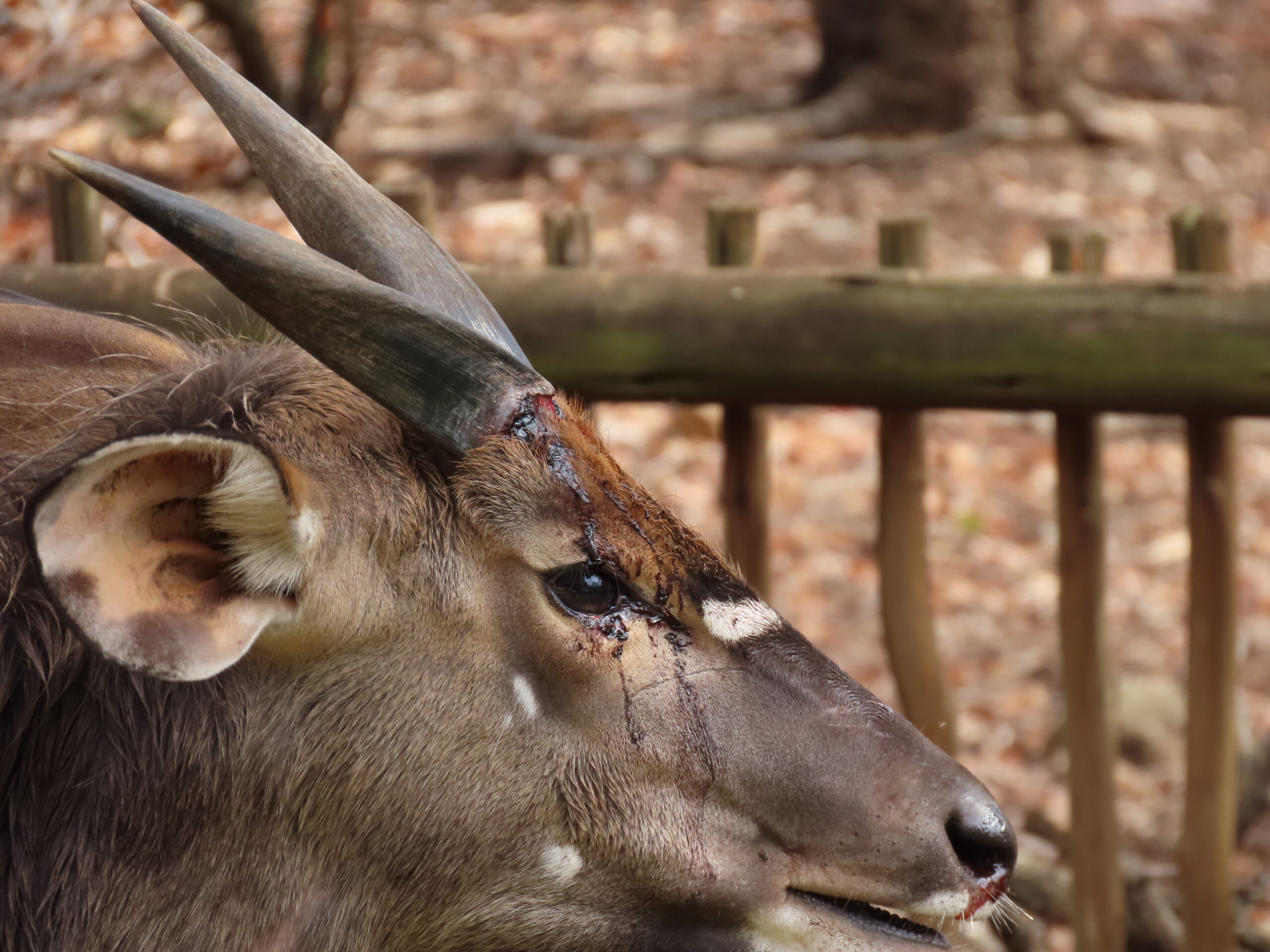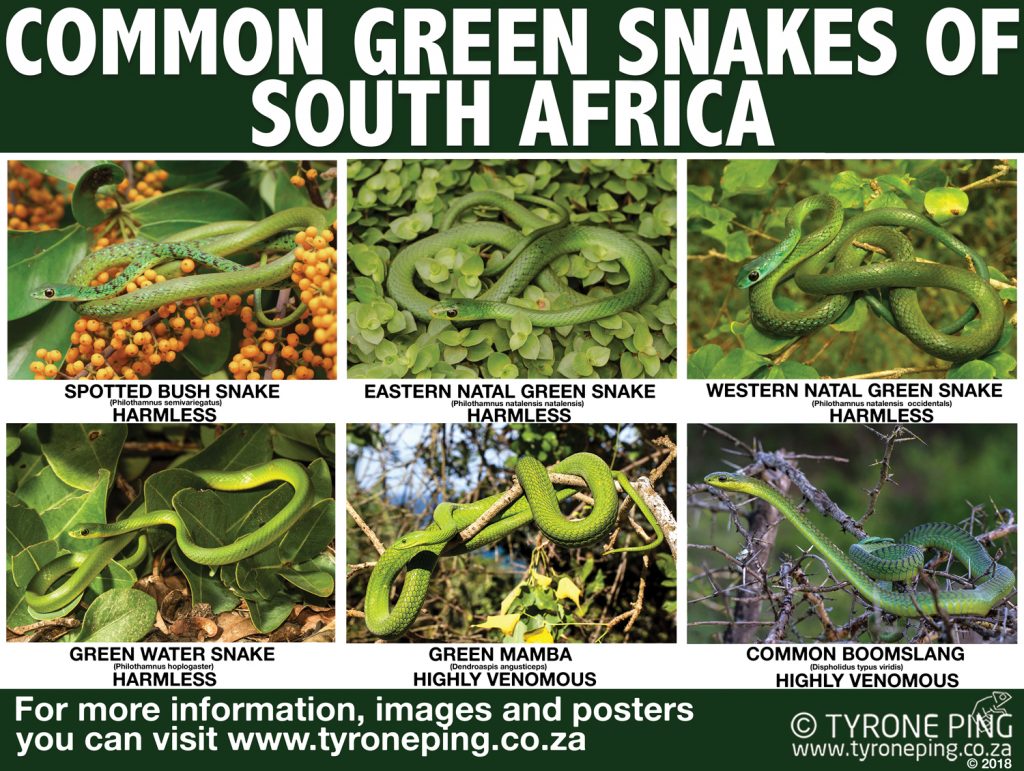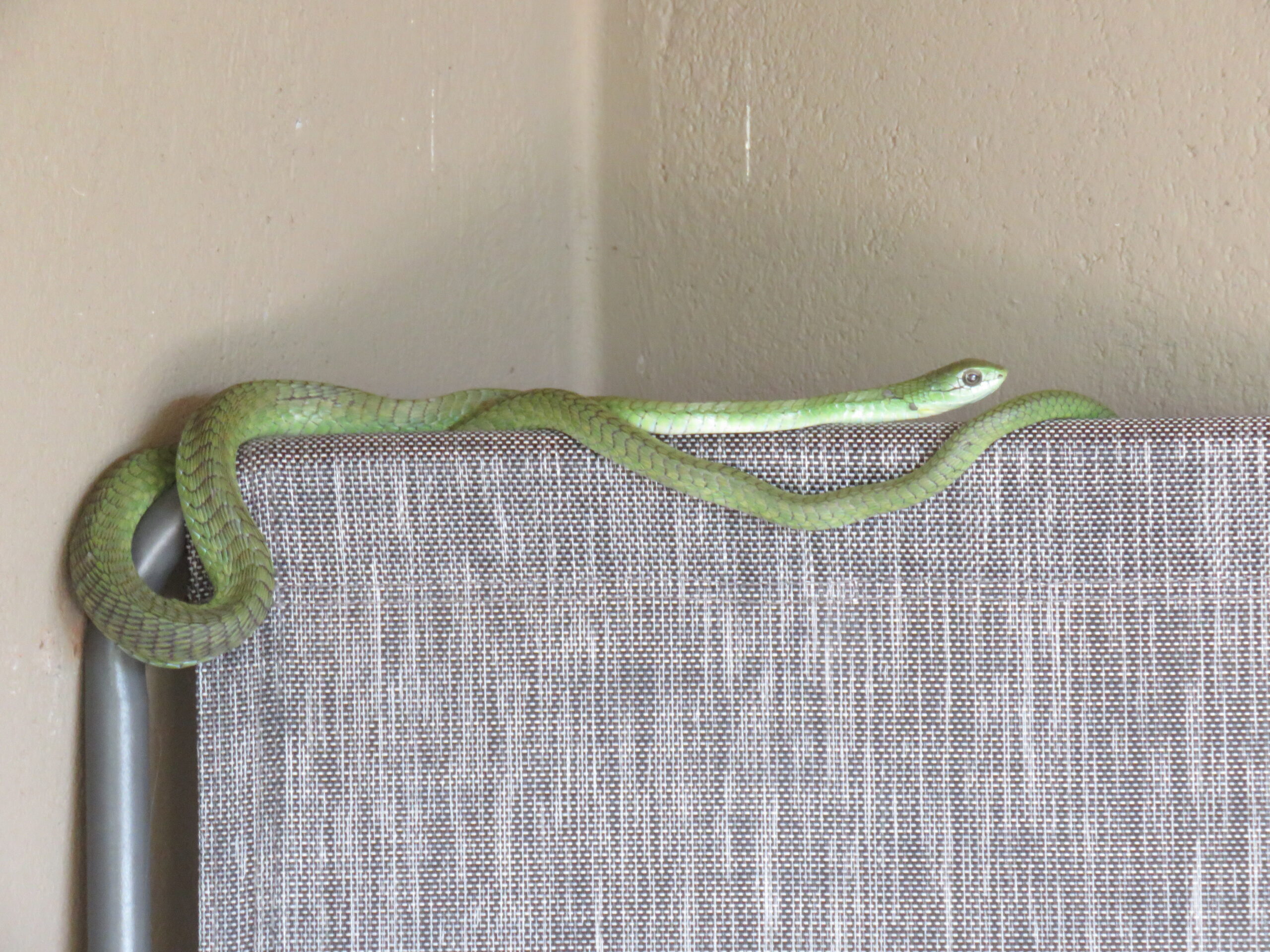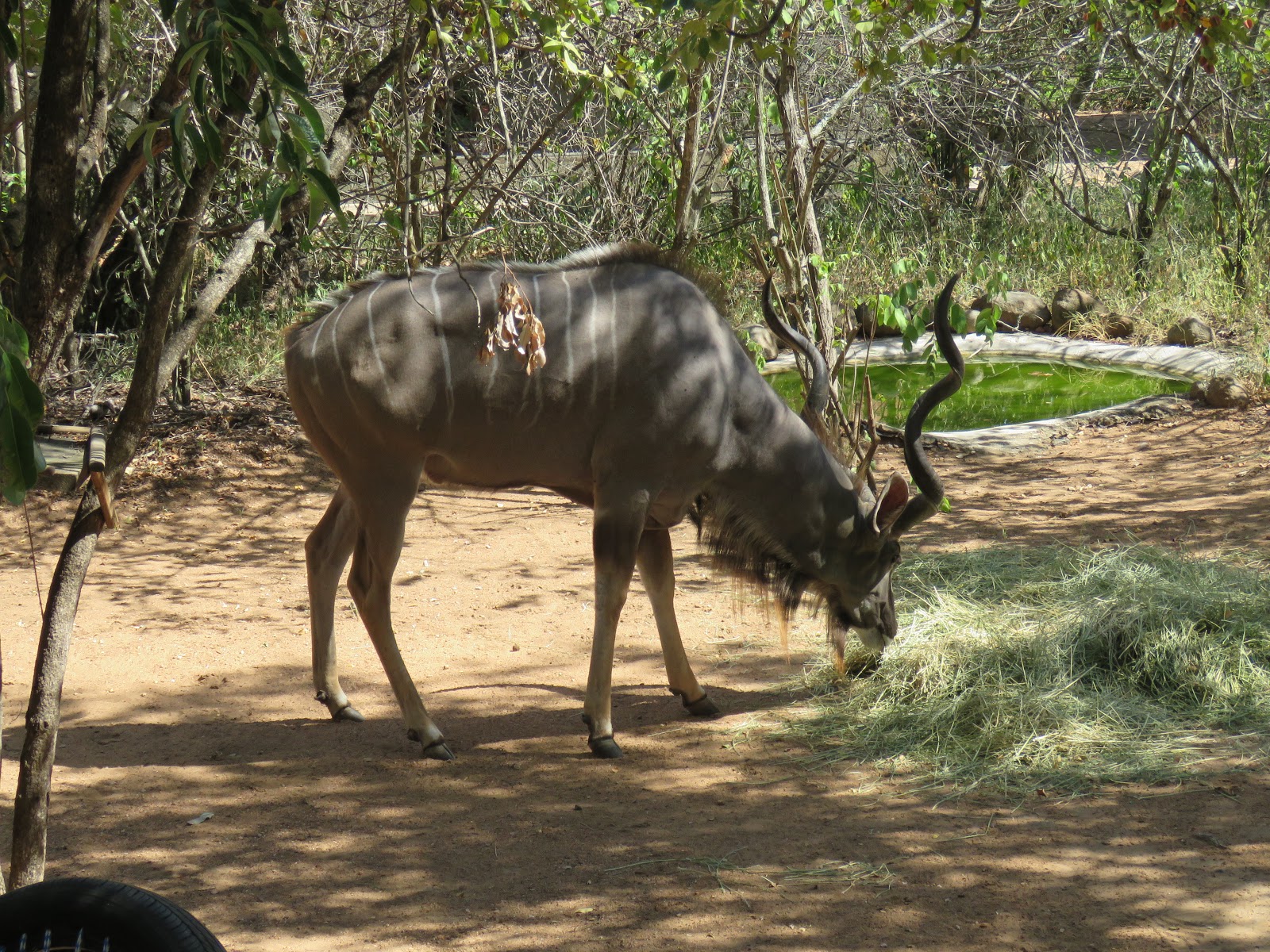
It was sad to see that now Nathan, Norman’s son, also has a serious injury. Here’s what happens when this type of injury occurs:
Of course, the outcome depends a bit on the species of antelope and the extent of the injury.
-
Horn anatomy: Antelope horns (unlike deer antlers) are permanent structures. They are made of a bony core that is an outgrowth of the skull, covered by a keratin sheath (similar to our fingernails).
-
If the horn sheath breaks off: Sometimes, the keratin sheath can be knocked loose or cracked. This can be painful, but if the bony core remains intact, the sheath may regrow or heal over time.

It surely must be painful.
If the horn separates from the skull (the bony core breaks): This is far more serious. Since the bony core is part of the skull, damage usually exposes living bone and blood vessels. The animal can suffer from:
-
-
Heavy bleeding (the base of the horn is well supplied with blood).
-
Risk of infection (flies and bacteria can quickly invade exposed bone tissue).
-
Chronic pain or weakness in the horn structure.
-
In severe cases, the animal might not survive if infection or blood loss is extensive.

There’s no way to determine how this happened to Nathan. It’s so sad to see him this way.
-
-
Wild antelopes: In nature, such injuries often become fatal if severe, since the animal is weakened and vulnerable to predators. However, minor cracks or partial separations might heal on their own, though the horn could grow misshapen.
-
In managed reserves or farms, A veterinarian may trim away damaged horn, clean the wound, and apply antibiotics. Some horns can continue to grow normally after partial loss if the growth tissue at the base isn’t destroyed.
We can only wait and see what the vets decide to do, if anything. We have seen these types of injuries on other wild animals, and they’ve fully recovered in time. We will report here when we have an update.
On another note, it appears that winter is over in South Africa, although it doesn’t officially end until September 21. I’ve started wearing insect repellent again now that it’s warming up, after noticing a few mosquitoes. Also, soon, we’ll be on the lookout for snakes, which are plentiful in Marloth Park.
For the first time in several months, when we left Jabula on Friday night, we heard the loud sounds from tree frogs in the pond on our walk to the parking lot, reminding us of summers in the bush.

This coming Saturday, the weather forecast predicts highs of 102°F, 39°C. With the humidity here, it will be uncomfortable, but we’re used to it, as we are used to the vast array of insects and the prospect of slithering snakes. We’ve spent more time in Marloth Park in hot weather than we have in the short, cool winters.
The timing has worked well for us to depart in mid-September. In future visits, we’ll strive to be here in the cool winter months. With the flexibility we enjoy as home-free world travelers, this is easy for us to arrange.
Tonight is Quiz Night, and our friends Carol and Colin, whom we visited last evening for sundowners at their lovely home overlooking the Crocodile River, are joining our group of four. It will be a lot easier for us when we have the help of four others to achieve a higher score than we’ve had the past two weeks, when it was only the two of us. Six brains are certainly better than two!
Be well.
Photo from ten years ago today, August 19, 2015:



































































